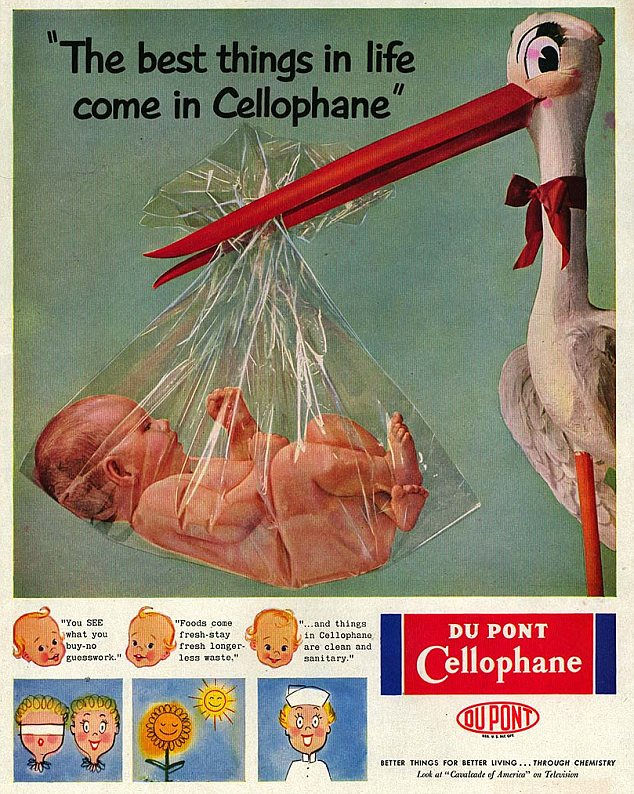Is Plastic Really the Best Thing for Your Baby?
- Abby McCredie
- Mar 29, 2021
- 2 min read

This advertising poster for Cellophane from the 1950s was meant to convey the idea that the Cellophane is so clean and sterile that you could put a baby in it. However, these days this image would have a very different connotation. For example, my interpretation of the image was that it was a poster promoting pro life to scare women out of having abortions!
This is a great example of the concepts of denotation and connotation. Roland Barthes refers to denotation as “...the common-sense, obvious meaning of the sign” and connotation as “...the interaction that occurs when the sign meets the feelings or emotions of the users and the values of their culture.” (Fiske 2010 p80-81).
In this poster ad, the denotation is the image of a stork holding a baby wrapped in a cellophane bag in its beak with the wording “the best things in life come in Cellophane”. In the bottom part of the image, three simple pictures of happy faces and flowers appear below three simple pictures of happy baby faces. The babies are saying positive things about Cellophane.
The connotation of this image can be very different. For the older generation or at the time this advertisement was published, the connotation would be that new technologies like plastic bags were good and healthy. People could believe that plastic bags are so clean and safe that you could put a baby in it. However, today’s connotation of plastic bags is more negative as it relates to issues such as climate change and global warming.
This also shows the concept of ideology as it relates to semiotics. This concept is described by Fiske as “The meanings I find in a sign derive from the ideology within which the sign and I exist” (Fiske 2010 p163). What Fiske is saying is that the connotation of a communication is directly related to the ideology of the audience. The ideology of society in the 1950s was much more enthusiastic about new technologies and new products. This was a logical selling point for advertisers because this was an era where technological advances such as vaccines, refrigeration and cars were making real differences to people’s lives. People were also more trusting of the corporations who were selling new technologies, probably because they hadn’t realised the problems that came with these new technologies, like the real danger of toddlers suffocating when playing with plastic bags.
Today’s ideology views new consumables, especially plastics more negatively and with less trust of corporations. This ideology is influenced by the knowledge of the dangers of some of these technologies and the environmental damage from plastics. As a result of this, people today would be much more likely to have negative interpretations of this image, in fact most people would find it pretty confronting!
Fiske, John. Introduction to Communication Studies, Taylor & Francis Group, 2010. ProQuest Ebook Central, http://ebookcentral.proquest.com/lib/uow/detail.action?docID=958077.
Created from uow on 2021-03-29 02:12:22.



Comments